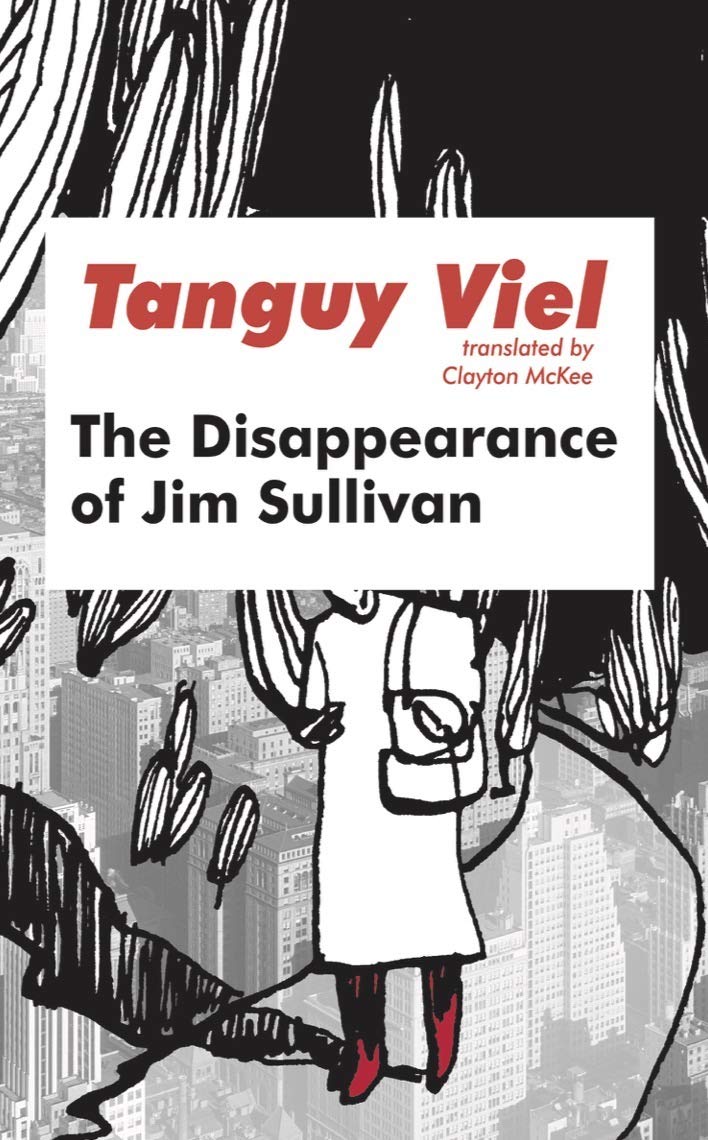A Hybrid Literary Beast
Reviews
By Gabino Iglesias
Tanguy Viel’s The Disappearance of Jim Sullivan is a novel about a novel. That might sound confusing—or meta, depending on your frame of mind—but the end result is a wildly entertaining book that obliterates the rules of storytelling while simultaneously exceling at it.
A French author is convinced that American fiction is the only truly international fiction, whether it’s set in New York City or a small farm somewhere in the Rust Belt. With this idea in mind, the author sets out to write a quintessentially American novel. The author proceeds to tell us what the novel will be about, and all of it is, in a way, perfect Americana: a professor who sleeps with his students, a mid-life crisis, Dodges and Chryslers on the open road, crime with an international angle, and infidelity. The narrative-within-a-narrative is even haunted by an American ghost: Jim Sullivan, a singer-songwriter who put out two albums—one titled U.F.O.—and then disappeared without a trace in Santa Rosa, New Mexico.
Yet The Disappearance of Jim Sullivan is less obsessed with writing than with “the international appeal of a book.” So, in the act of telling, Viel deconstructs what is perhaps most American about the American novel: its most commonly employed scenes and techniques.
To be honest, I thought for a long time that my book would start here—at that big dinner that would put all of the characters in one place and provide a real idea of America—thanks to the countless novels I’d read that commence like that: in the middle of a big scene in which nothing happens, but which allows everyone to be introduced.
The old adage of “show, don’t tell” dies a wonderful death here, only to comes back like some kind of literary zombie. “Show, don’t tell”—use actions and rich sensory details, not long paragraphs of exposition, to reveal character and advance the story—is one of those perennial pieces of writing advice that every new generation of writers gets from its predecessors. In The Disappearance of Jim Sullivan, a narrator tells a story, but also tells the story of that story, which means there are interruptions that, in another context, would be seen as shattering the fourth wall. However, in this telling, readers are nonetheless pulled into the narrative and are allowed to “see” the characters clearly.
Another outstanding element of this novel, albeit one that only appears now and then, is Jim Sullivan. Veil uses the strangeness of Sullivan’s disappearance to point at some facts of contemporary American life that work on an international level and we don’t know exactly why. For those looking for backstory and context, journalist Rebecca Bengal’s 2019 New York Times piece on Sullivan, “Jim Sullivan, a Rock ’n’ Roll Mystery That Remains Stubbornly Unsolved,” offers a superb synopsis.
On his 1969 debut album, U.F.O., he sang of beckoning highways, of aliens, of an Arizona ghost town, of a man who looked ‘so natural’ in death it was clearly his time to go. Six years later, the 35-year-old Sullivan disappeared in Santa Rosa, N.M. On the front seat of his recovered gray VW bug were his ID, his beloved 12-string Guild guitar, and a box of his two albums, U.F.O. and the 1972 LP Jim Sullivan.”
In his novel, Viel and his narrator offer a non-explanation that quickly becomes a metaphor for America.
Most likely, he restarted the car and drove about 25 miles into the desert, since it was about 25 miles from the village that they found his car. After which, we don’t know. We know only that in the area there are more reports of extraterrestrial phenomenon than anywhere else in the United States. And there you have it, that’s America; no one knows what happened in his body was never found.
The Disappearance of Jim Sullivan purposefully blurs all dividing lines between author and narrator, fiction and nonfiction, and America as a country and America as an ideal. Viel’s tongue-in-cheek approach to some of the idiosyncrasies of American culture, which is often filtered through literature, perfectly illustrates the obsession other countries can have with the United States. “Adultery is a very important part of American novels. It’s even an obsession of American novels: the husband or the wife, even after divorce, has a history with someone else, and if possible, with the person that the other hates the most.”
While that description should be more than enough to make fans of great, entertaining literature grab a copy immediately, The Disappearance of Jim Sullivan is also much more than the sum of its parts. At once a real novel with superb pacing wrapped in a story about writing and a hybrid literary beast that delivers critiques as well as praise, Viel’s novel provides proof that sometimes outsiders provide the most accurate and incisive observations.
Gabino Iglesias is a writer, professor, and book reviewer living in Austin, Texas. He is the author of Zero Saints and Coyote Songs and the editor of Both Sides: Stories from the Border. You can find him on Twitter @Gabino_Iglesias.
More Reviews

